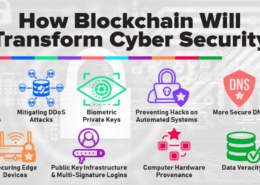How can biometric authentication methods improve cybersecurity compared to traditional password-based systems?
Multi-factor authentication (MFA) enhances security by requiring users to provide multiple forms of verification before accessing systems, significantly reducing the risk of unauthorized access. Firstly, MFA adds an extra layer of security beyond just passwords. Even if a password is compromised, adRead more
Multi-factor authentication (MFA) enhances security by requiring users to provide multiple forms of verification before accessing systems, significantly reducing the risk of unauthorized access.
Firstly, MFA adds an extra layer of security beyond just passwords. Even if a password is compromised, additional verification methods, such as biometrics or one-time codes, prevent unauthorized access.
Secondly, MFA reduces the risk of phishing attacks. Since attackers would need to compromise multiple factors, it’s much harder for them to gain access using just stolen credentials.
Thirdly, MFA protects against brute force attacks. With multiple layers of verification, even if one factor is guessed or stolen, the additional factors act as barriers.
Moreover, MFA provides flexibility by supporting various authentication methods, such as SMS codes, email links, biometric scans, or hardware tokens. This adaptability ensures that security measures can be tailored to different user needs and threat environments.
In conclusion, MFA significantly enhances security by requiring multiple verification factors, reducing the effectiveness of phishing and brute force attacks, and providing adaptable authentication methods to protect against a wide range of threats.
See less

Biometric authentication methods significantly enhance cybersecurity compared to traditional password-based systems by leveraging unique physical and behavioral characteristics of individuals. Unlike passwords, which can be easily forgotten, guessed, or stolen, biometric data such as fingerprints, fRead more
Biometric authentication methods significantly enhance cybersecurity compared to traditional password-based systems by leveraging unique physical and behavioral characteristics of individuals. Unlike passwords, which can be easily forgotten, guessed, or stolen, biometric data such as fingerprints, facial recognition, iris scans, and voice patterns are inherently unique to each person and difficult to replicate.
Firstly, biometric authentication reduces the risk of unauthorized access. Since biometrics are unique to individuals, it is almost impossible for hackers to use stolen credentials to gain access to sensitive information. In contrast, passwords can be easily compromised through phishing, social engineering, or brute force attacks.
Secondly, biometrics eliminate the need for users to remember complex passwords. This reduces the likelihood of using weak or easily guessable passwords, a common vulnerability in traditional password systems. Users are more likely to adhere to security protocols when they do not have to manage numerous and complex passwords.
Additionally, biometric systems can offer multi-factor authentication (MFA) by combining something the user is (biometric data) with something the user has (a smart card or mobile device). This layered security approach adds an extra hurdle for potential attackers, further enhancing protection.
In conclusion, biometric authentication methods offer a more secure and user-friendly alternative to traditional password-based systems, reducing vulnerabilities and enhancing overall cybersecurity.
See less